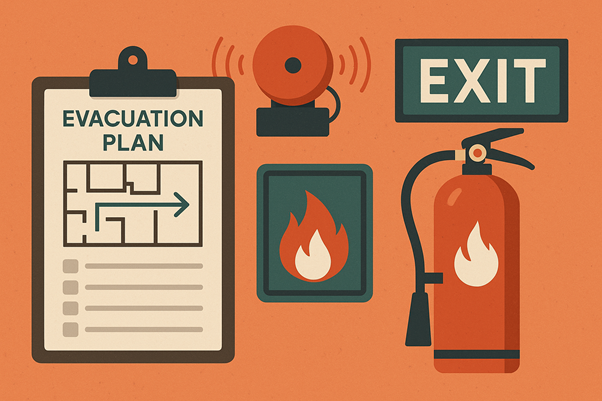
Fire drills and evacuation tests are crucial safety measures designed to prepare individuals and organizations for emergency situations. While they may seem routine or even disruptive, their importance cannot be overstated. These exercises not only test the effectiveness of evacuation procedures but also help identify potential gaps in emergency response plans. Proper preparation for these drills can make the difference between a chaotic evacuation and a smooth, life-saving response. This article will walk you through everything you need to know to prepare effectively for fire drills and evacuation tests.
Why Fire Drills and Evacuation Tests Matter
Fires and other emergencies can occur without warning. In such moments, panic and confusion are common—especially if people are unsure of what to do or where to go. Fire drills simulate these scenarios in a controlled environment, giving occupants a chance to:
- Practice evacuation routes
- Understand their roles and responsibilities
- Identify and resolve safety hazards
- Improve response times
- Enhance coordination among staff, safety officers, and emergency services
Regular drills help reduce anxiety during real emergencies and reinforce muscle memory, ensuring that everyone reacts swiftly and appropriately.
Step-by-Step Preparation for Fire Drills
- Understand Your Building’s Fire Safety Plan
Every building, whether residential, commercial, or institutional, should have a fire safety plan in place. Familiarize yourself with:- All emergency exits
- Location of fire alarms, extinguishers, and emergency lights
- Primary and secondary evacuation routes
- Assembly point(s) outside the building
- Procedures for assisting individuals with disabilities
If you’re a manager or team leader, ensure every member of your group is familiar with these details.
- Assign Roles and Responsibilities
For an organized evacuation, certain roles must be assigned in advance. These may include:- Floor Wardens: Oversee evacuation on specific floors
- Sweepers: Ensure all rooms are clear
- Route Guides: Direct people along evacuation paths
- Assembly Point Coordinators: Take roll call and report missing persons
Training these individuals in fire safety protocols and communication strategies is essential for drill success.
- Conduct a Risk Assessment
Before holding a drill, perform a risk assessment to identify:- Potential obstacles in evacuation paths (e.g., locked doors, clutter)
- Individuals with special evacuation needs (e.g., elderly, disabled, non-English speakers)
- Areas with poor visibility or ventilation
- Equipment or operations that may require special shutdown procedures
Addressing these risks ahead of time will lead to more effective drills.
- Communicate Clearly
Communication is key before, during, and after a fire drill. Inform all participants of:- The drill schedule (unless it’s a surprise drill, which tests readiness better)
- What to expect and how to respond
- The importance of treating every drill as a real emergency
Use emails, posters, meetings, and reminders to ensure the message is clear.
- Practice and Review Evacuation Routes
Evacuation routes should be clearly marked and unobstructed. Encourage people to walk the routes before the drill to:- Locate the nearest exits
- Learn alternate paths in case of blockage
- Identify emergency devices like alarms and extinguishers
Physically rehearsing the route helps individuals feel more confident and reduces confusion during actual emergencies.
What to Do During a Fire Drill
When the fire alarm sounds, everyone should treat it as if it were a real emergency. Here’s what to do:
- Stop What You’re Doing Immediately: Don’t delay to gather belongings.
- Follow the Evacuation Plan: Head to the nearest safe exit using designated routes.
- Don’t Use Elevators: Always use stairs during fire drills and real fires.
- Assist Others: Help individuals who may need extra support, if safe to do so.
- Go to the Assembly Point: Once outside, go directly to the predetermined assembly area.
- Check In: Supervisors or wardens should take attendance and report any missing individuals.
After the Drill: Review and Improve
The drill isn’t over when everyone returns to the building. The post-drill review is a critical phase for learning and improvement.
Conduct a Debriefing Session
Gather feedback from participants, wardens, and safety personnel. Questions to ask include:
- Did everyone hear the alarm?
- Were exits clearly marked and accessible?
- Did anyone experience confusion or panic?
- How long did it take to evacuate?
- Were any issues encountered during evacuation?
Update the Evacuation Plan
Use insights from the debriefing to:
- Adjust routes or signage
- Address delays or bottlenecks
- Improve communication systems
- Enhance training for safety personnel
Regular updates ensure that the plan remains effective as the building’s layout or occupancy changes.
Special Considerations for Different Settings
Workplaces
Ensure new hires receive fire safety training during onboarding. Conduct regular drills and provide refresher courses, especially in high-risk environments such as factories or laboratories.
Schools
Children need age-appropriate fire safety education. Teachers should maintain order and calm, while older students may be given buddy responsibilities to assist younger peers.
Hospitals and Nursing Homes
Evacuating vulnerable patients requires detailed planning, staff coordination, and sometimes the use of specialized equipment. Staff should receive thorough training and conduct frequent drills.
Residential Buildings
Residents should know their exit routes and avoid blocking hallways or stairwells with furniture. Property managers must ensure that alarms and lights are functioning and that escape routes are not obstructed.
Conclusion
Fire drills and evacuation tests are not just bureaucratic requirements—they are life-saving tools that prepare individuals and organizations to respond effectively to emergencies. With the right planning, communication, and commitment to continuous improvement, these drills can foster a culture of safety and readiness.
Taking drills seriously today means saving lives tomorrow. Whether you’re an individual, team leader, or building manager, play your part in ensuring every evacuation is orderly, efficient, and safe.
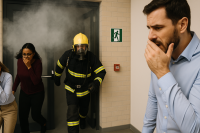
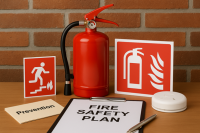
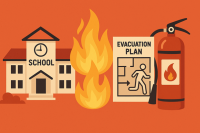
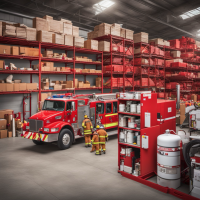
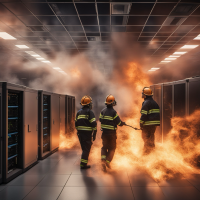
Leave A Comment